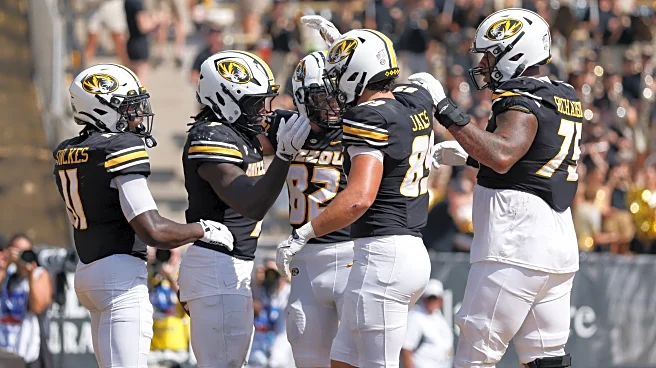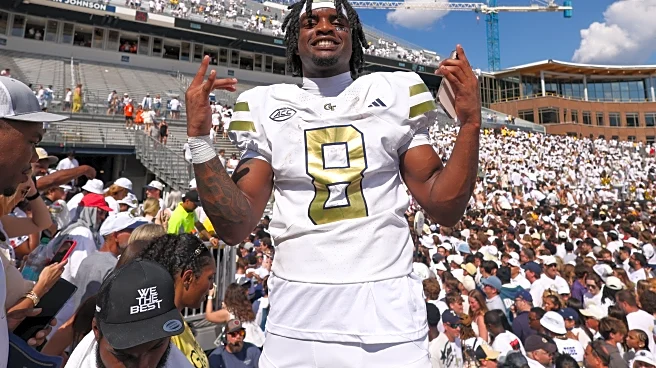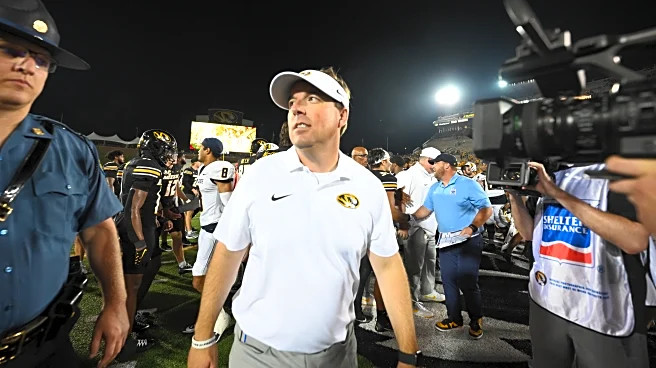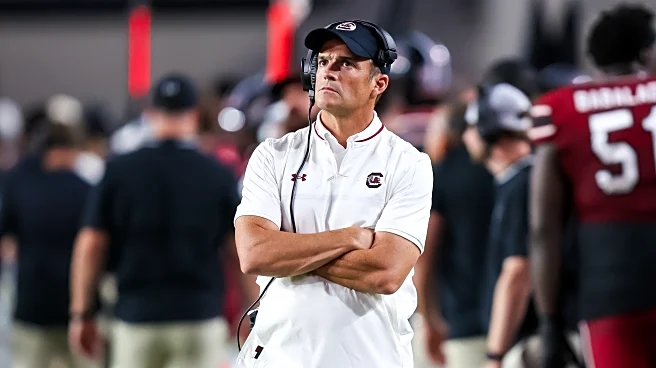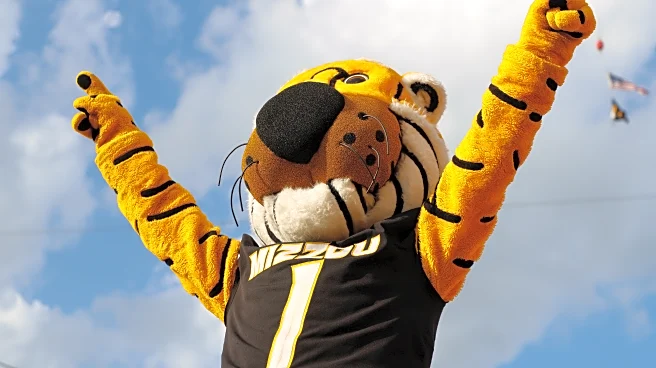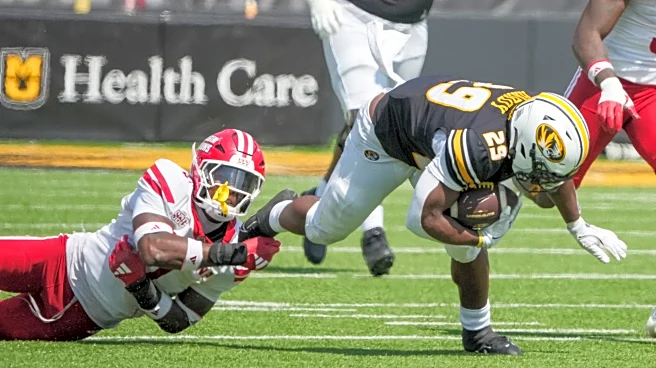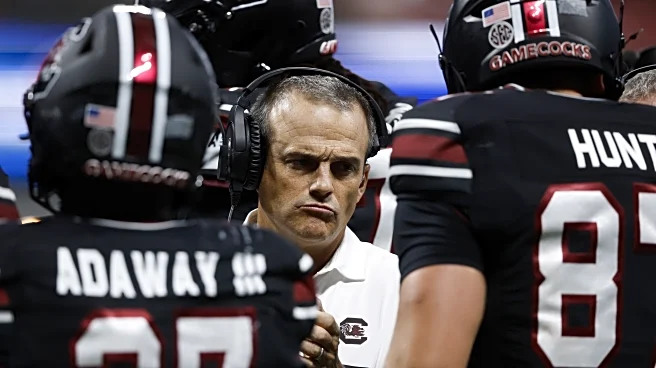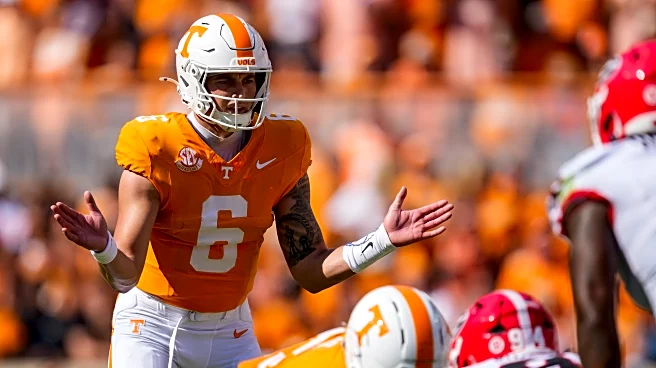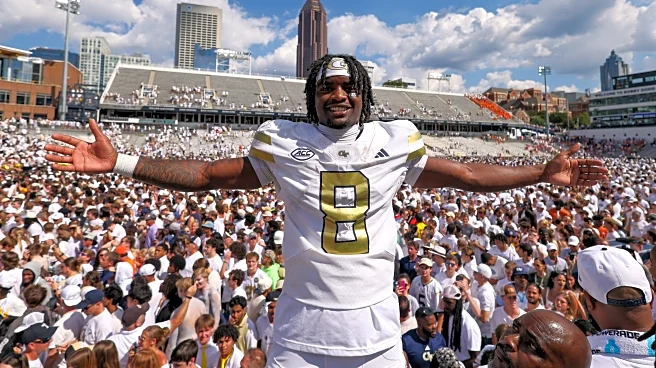Mizzou entered the 2025 season unranked, largely due to question marks surrounding the team’s offense.
Could Beau Pribula effectively replace Brady Cook? Would Ahmad Hardy live up to the hype and be able to transition to the SEC? And could the team’s wide receivers replace three starters, including a program cornerstone?
Pribula quickly took charge of the offense, connecting with Marquis Johnson for a 49-yard touchdown pass on the unit’s first drive of the season, and the Tigers haven’t looked back.
Kirby Moore and the team’s attack quickly turned those question marks into exclamation points, scoring at the highest rate in the Eli Drinkwitz era and currently sporting the second-best PFF offensive grade in FBS – tied with Indiana and only trailing Rutgers, teams that have combined to face zero power conference opponents.
However, one question mark remains: the offensive line.
The group has allowed seven sacks over its first three contests, including two last Saturday against Louisiana. Drinkwitz quickly pointed the issue out in the postgame press conference.
“I don’t love where we’re at protecting the quarterback,” he said. “We gave up two sacks there and a free runner on a pressure, so we’re going to have to look at that and get that off the tape. I know South Carolina’s defensive coordinator likes to bring pressure, so we’ve got to get that shored up.”
Advanced stats paint a rosier picture of the line’s performance. Mizzou rates in the top 20 of the FBS in PFF’s run blocking and pass blocking grades, ranking second in the SEC in both categories.
But further digging shows Beau Pribula and Ahmad Hardy have gone a long way to help shore up the line’s early season struggles.
Pribula has been excellent when passing under pressure, completing 10 of 15 passes for 96 yards and two touchdowns. He’s recorded an 84.6% adjusted completion percentage on throws under pressure, which is actually higher than his adjusted completion percentage (80.6%) when kept clean.

For comparison, Brady Cook had a 39.2% completion percentage and threw three touchdowns with three interceptions when facing pressure in 2023, his best collegiate season. Cook’s adjusted completion percentage under pressure that season was 25.1% lower than his percentage when kept clean.
Pribula’s athleticism and mobility in the pocket have allowed him to extend his time to throw, connecting on plays that looked like a guaranteed loss of yardage. He displayed that ability Saturday against Louisiana in the second quarter, evading a free rusher in the backfield and getting the ball out to Jamal Roberts with the defender hanging onto his ankles.
Roberts took the ball and scampered his way to a touchdown, an explosive 39-yard score that would have been a sack for most other college quarterbacks.
The Tigers’ run blocking was noticeably better against the Ragin’ Cajuns, paving the way for a 250-yard performance by Ahmad Hardy and creating holes in the Louisiana defense that were so large they could have fit multiple Armand Membous.
But in this area, too, the offensive line has been aided by impressive performances from its running backs – especially Hardy.
The ULM transfer has been a bulldozer coming out of the backfield, and at one point in the Louisiana game Hardy physically dragged a defender for at least 10 yards on his back. Over 70% of Hardy’s 463 rushing yards this season have come after contact, and his 5.86 yard per rush after contact ranks sixth among FBS running backs with 25 or more rushing attempts.
PFF’s elusive rating, which measures “success and impact of a runner with the ball independently of the blocking,” helps put his early season excellence in context.
Cody Schrader scored 56.7 elusive rating during his historic 2023 season when he set the team’s single-season rushing yards record.
Ahmad Hardy’s rating through three games? An absurd 278.2, which ranks third among FBS backs with 25 or more rushing attempts.

Basic stats and a deep dive, though, both agree on the interior as the line’s main area of concern.
After a rough opening game, Cayden Green began to solidify himself at left tackle and ranks among the top 35 FBS tackles on PFF in both run blocking and pass protection. And Wake Forest transfer Keagen Trost has been even more impressive replacing Membou at right tackle, earning the second-highest PFF grade among all FBS tackles.
But the team’s starters on the interior – Dominick Giudice, Connor Tollison and Curtis Peagler – have combined to allow 10 of 11 hurries and 11 of 17 pressures surrendered in 2025.
Giudice and Peagler, in particular, have graded out poorly in protecting Pribula when he drops back to pass.
Green, Trost and Tollison are all ranked among the top 35 FBS players at their positions in pass blocking grade. Giudice and Peagler find themselves ranked outside of the top 120 FBS guards.
Peagler has struggled in his transition to a starting role, rating outside of the top 200 FBS guards through three games with a 56.9 PFF grade. The issues have reopened the door for Tristan Wilson, who began splitting snaps with Peagler mid-way through the Louisiana game and has graded out as a significantly better pass blocker in limited snaps.
“Tristan really kind of got put behind the eight ball because Connor [Tollison] wasn’t full speed, and then Connor got dinged, so he had to slide to center. But it truly was a competition,” Drinkwitz said of the starting battle at right guard. “And we just felt like there’s some meat up on that bone as far as improvement, and you’re going to need more guys than just five. So let’s start rotating those guys and see if we can’t create some definite competition.”
Drinkwitz said Tuesday that he plans to continue rotating Peagler and Wilson this week.
Offensive line struggles have not yet slowed Mizzou’s offense, but the team is about to experience a major uptick in the quality of the defensive lines and edge rushers they face.
South Carolina’s defensive line hasn’t had the same game wrecking impact this year as it did in 2024, but the Gamecocks still have sophomore All-SEC edge rusher Dylan Stewart.
The best pass rush the Tigers faced in the season’s opening weeks came from their rivals to the west, who graded out with the 64th-best pass rushing grade in FBS. Moving forward, six of the team’s nine remaining opponents rank in the top 40 in the category.
The good news for Mizzou: the pass block has improved each week, increasing from a 78.7 pass blocking grade against Central Arkansas to 87.5 last Satuday.
The offensive line came together late in fall camp for the Tigers, meaning the group has only been playing together as a unit for just over a month. The late switch has led to some predictable early season growing pains as the group focuses on creating cohesion and stronger communication.
Improving from week to week is one of the team’s mantras in 2025, and that’s been especially true for the line.
“The biggest thing that we’ve been focusing on, from the first game, is just improving every week. That’s something we’ve talked about as a team, but as an 0-line, getting the guys to gel more and more as the weeks go on,” Giudice said ahead of the Louisiana game. “And that’s something that we pride ourselves in is spending a lot of time together, really making sure that we’re on the same page. And that’s what we’re going to continue to focus on.”
The key questions now: can the line get past its growing pains, and how much room for improvement remains?
If Mizzou’s offensive line continues to grow and gets close to the form seen in 2023 and 2024, when it belonged in the upper echelon of the country, the Tigers should remain a threat to score on nearly every drive.
But a slowdown in improvement could throw a wrench in the machine-like precision seen from the team’s offense so far as they approach SEC play.
